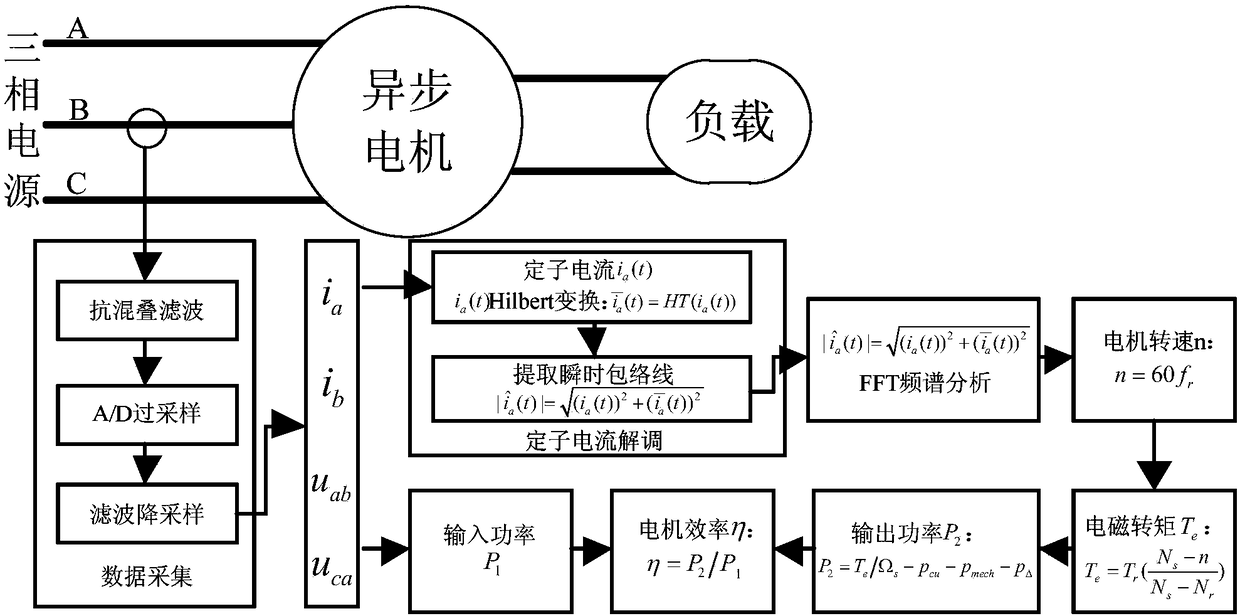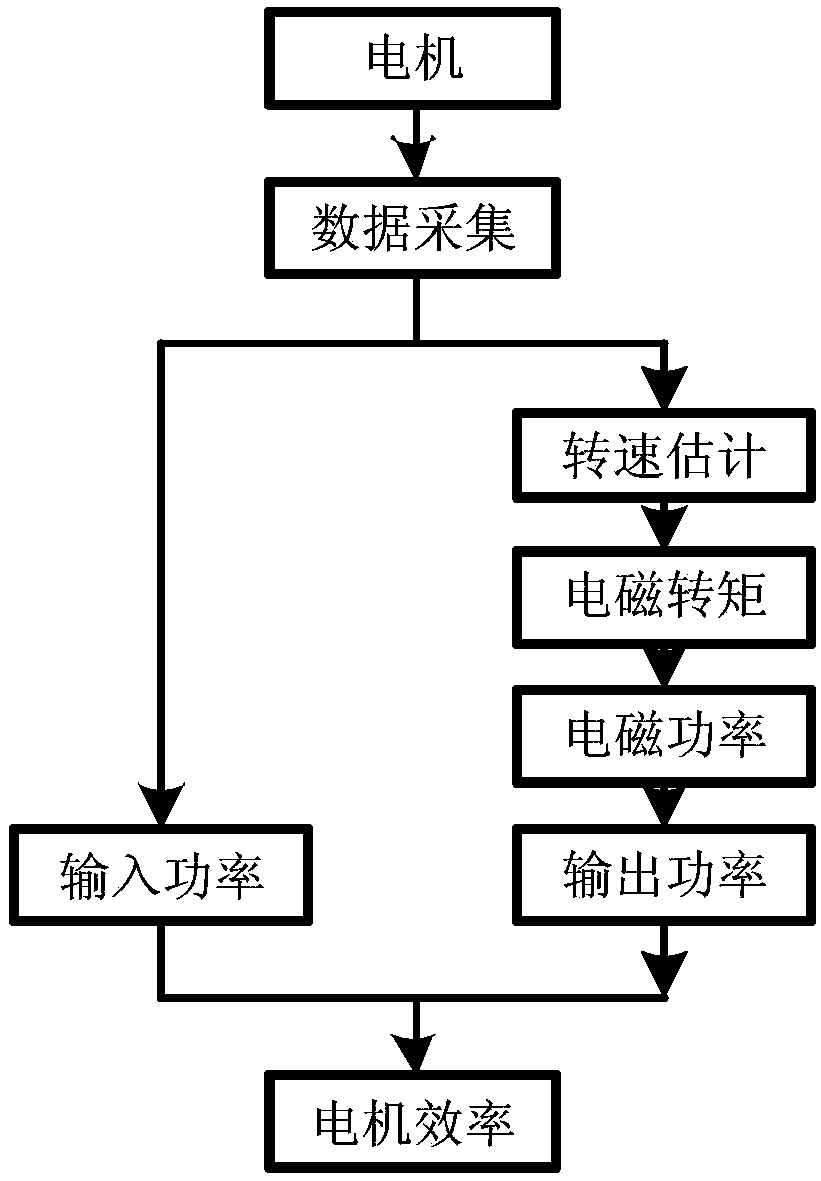Asynchronous motor energy efficiency estimation method based on online monitoring
An asynchronous motor and energy-efficiency technology, which is applied in the measurement of electricity, measurement of electrical variables, and motor-generator testing, etc., can solve the problems of simple structure, reliable operation and convenient maintenance, inability to use tooth harmonics, and limited application scope of asynchronous motors. , to achieve the effect of speed sensorless speed estimation, strong practicability and system cost reduction
- Summary
- Abstract
- Description
- Claims
- Application Information
AI Technical Summary
Problems solved by technology
Method used
Image
Examples
Embodiment Construction
[0043] The present invention will be further described in detail below in conjunction with the accompanying drawings and embodiments.
[0044] The inventive method comprises the following steps:
[0045] Step 1, set the stator current and stator voltage signal sampling frequency f s and sampling period T s , collect the stator current signal i a (t)i b (t) and stator voltage signal u ab (t)u ca (t); the stator current signal includes A-phase current i a (t) and B-phase current i b (t), the stator voltage signal includes AB line voltage u ab (t) and CA line voltage u ca (t)
[0046]Step 2, by collecting the stator current signal i a (t) do Hilbert transform Get the stator current signal i a Analytical signal of (t)
[0047] Step 3, parse the signal by extracting The instantaneous envelope of and for the instantaneous envelope Do FFT spectrum analysis to extract the inherent eccentric harmonic frequency of the asynchronous motor|f 1 ±f r The rotor speed h...
PUM
 Login to View More
Login to View More Abstract
Description
Claims
Application Information
 Login to View More
Login to View More - R&D
- Intellectual Property
- Life Sciences
- Materials
- Tech Scout
- Unparalleled Data Quality
- Higher Quality Content
- 60% Fewer Hallucinations
Browse by: Latest US Patents, China's latest patents, Technical Efficacy Thesaurus, Application Domain, Technology Topic, Popular Technical Reports.
© 2025 PatSnap. All rights reserved.Legal|Privacy policy|Modern Slavery Act Transparency Statement|Sitemap|About US| Contact US: help@patsnap.com



